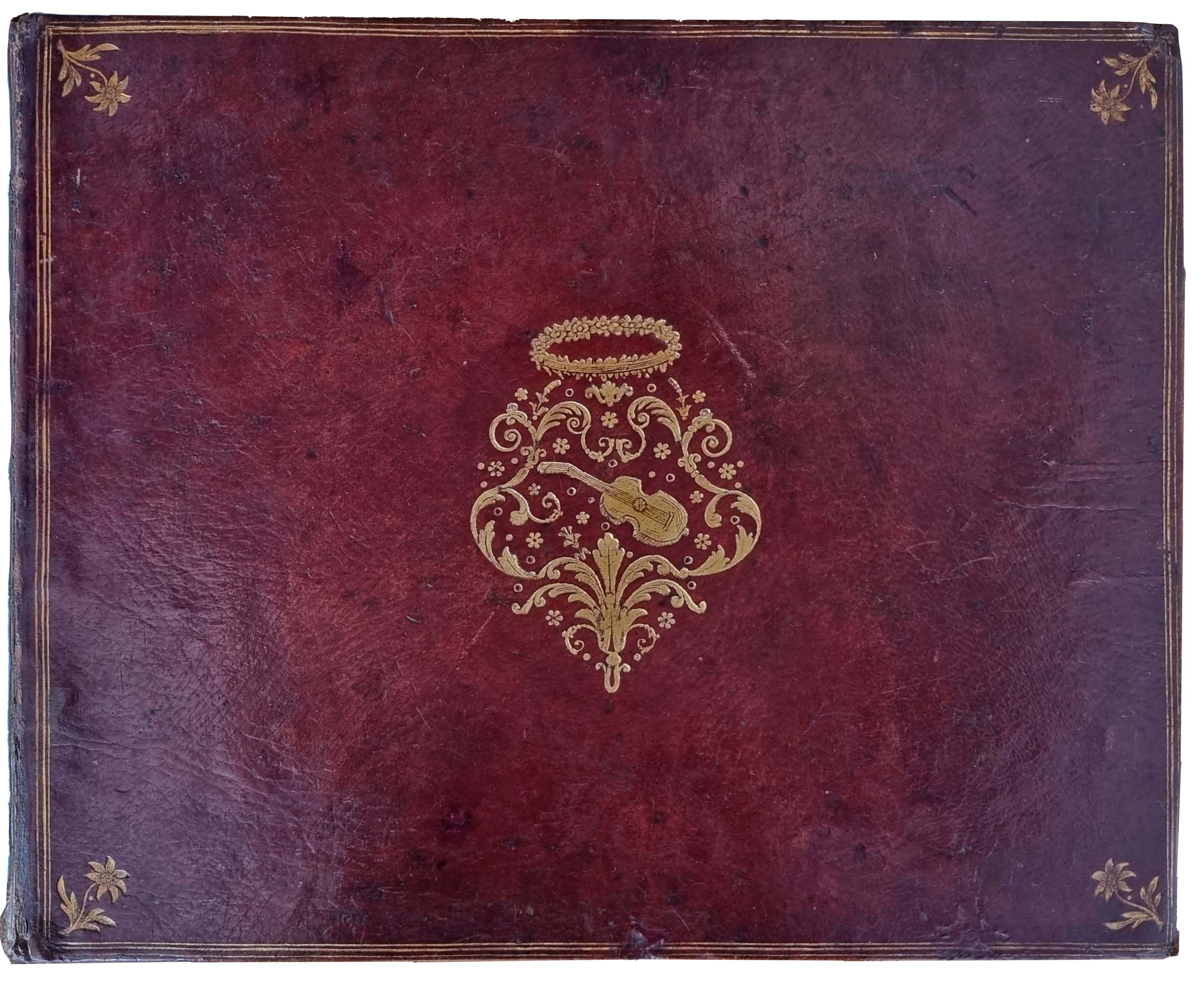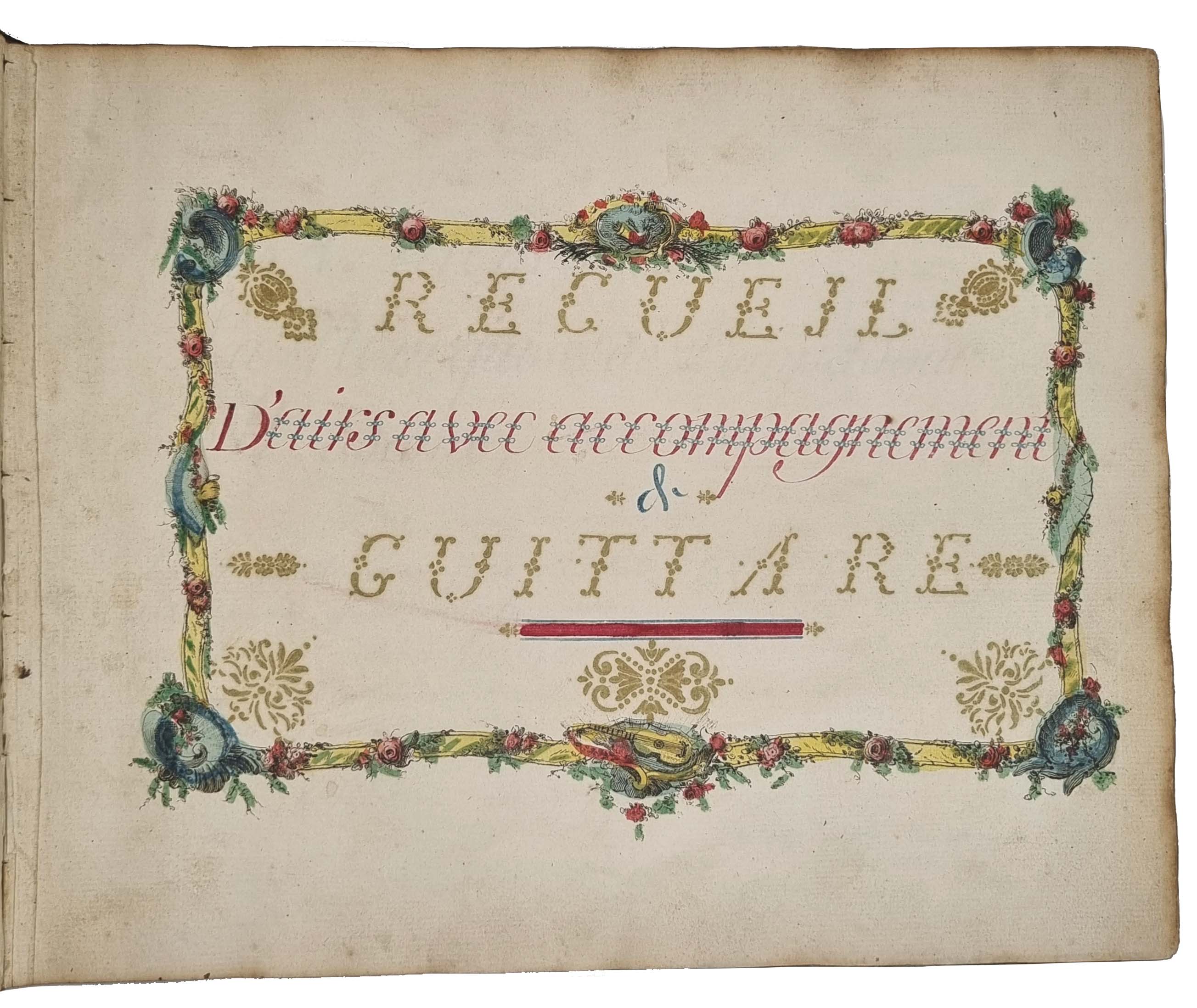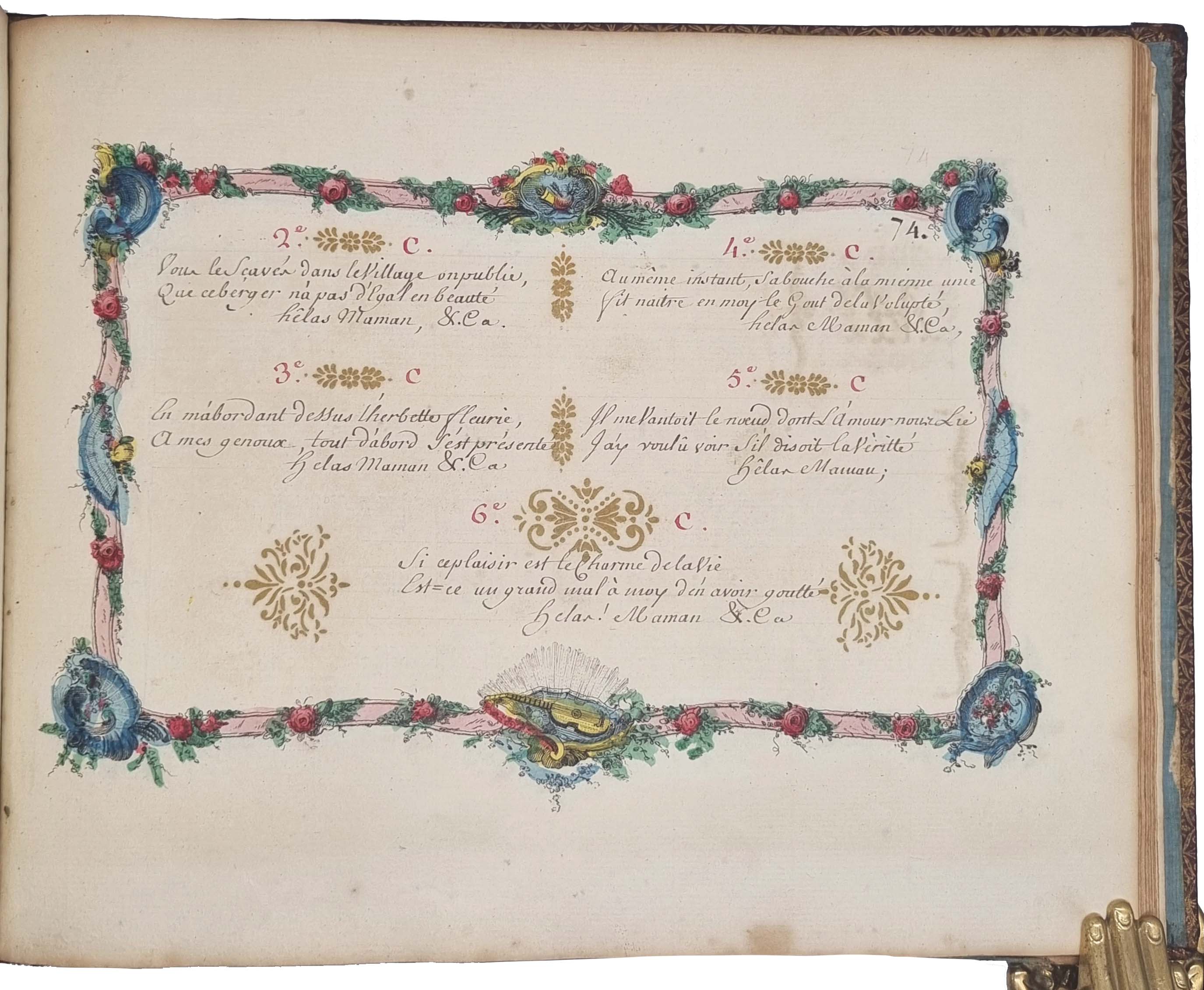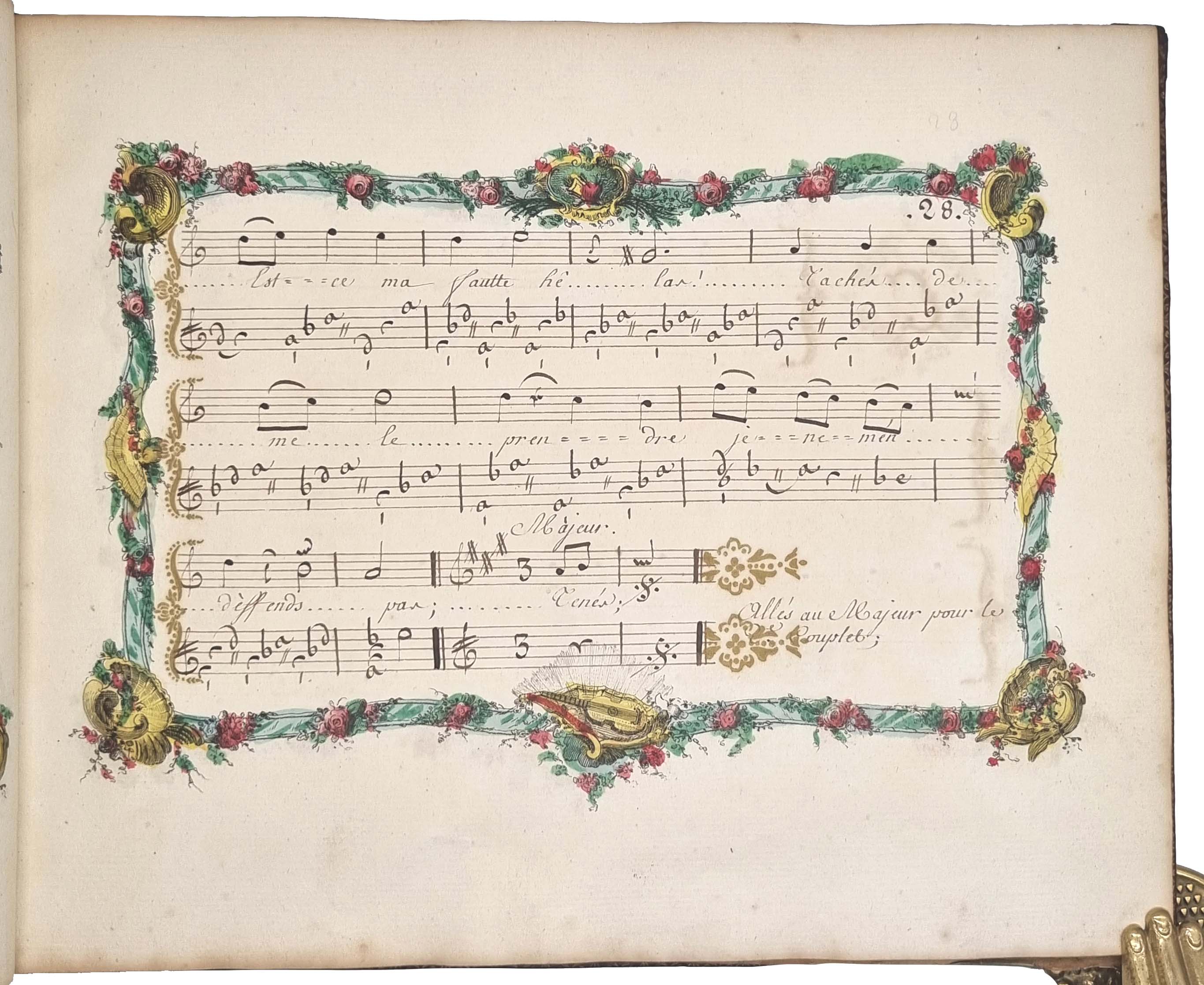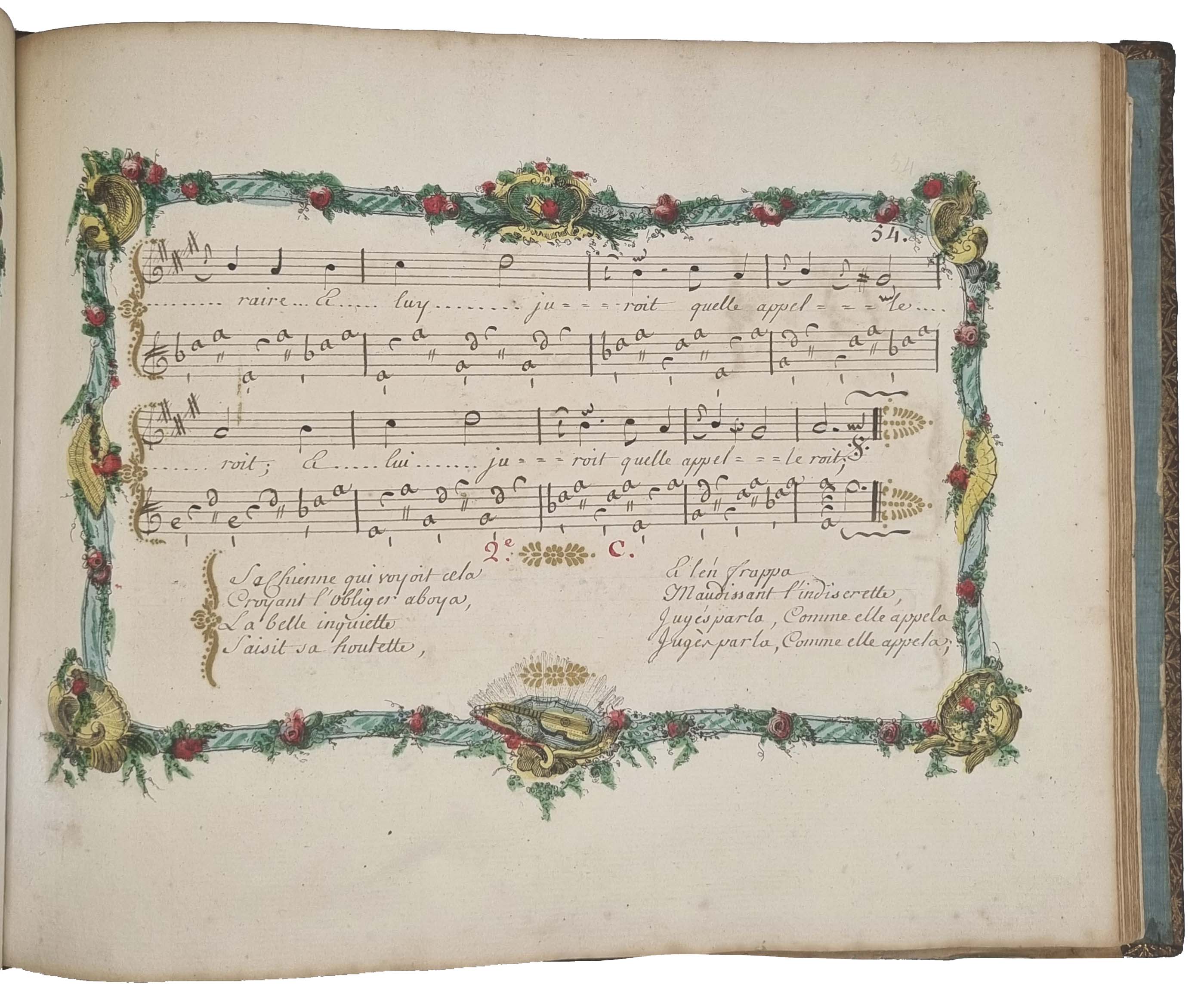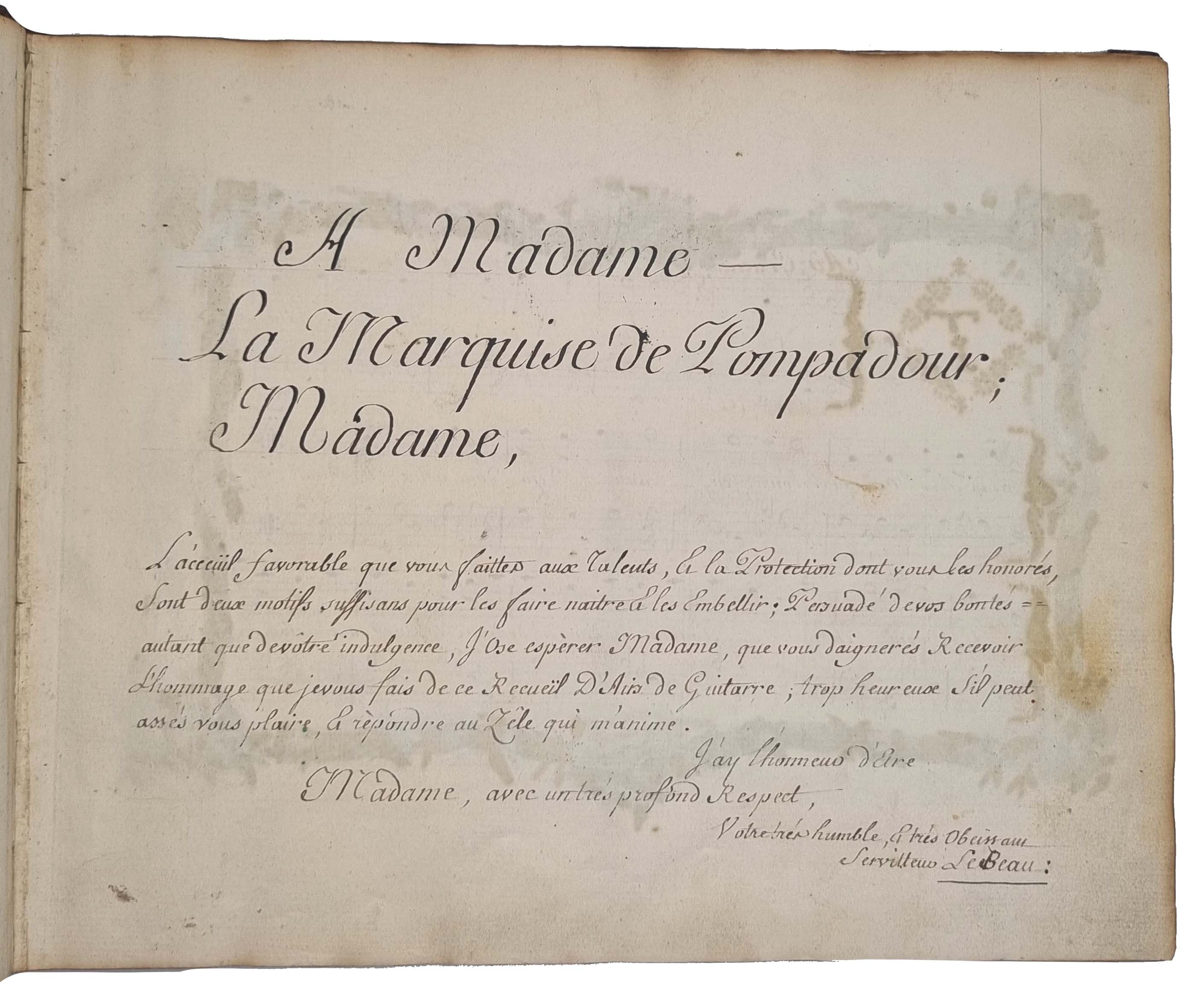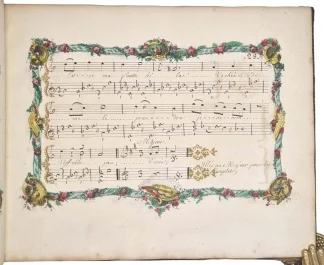LA BORDE, Jean-Baptiste
PRESENTATION TO MME DE POMPADOUR
Recueil d’airs avec accompagnement & guitare
Paris, “Cloitre Saint-Germain l’Auxerrois Chez Mr Doucet Architecte᾽᾽, circa 1750-60£9,500.00
Oblong 4to. pp. (iii) 112 (ix). Musical manuscript containing fifty-one ‘Airs’, ‘Vaudevilles’, ‘Villageoises’ and ‘Romances’, in brown ink for solo voice and for five-course guitar, notated in tablature, each song within a fine hand-coloured engraved border, with titles and decoration applied with stencils in gold and red, dedication to the “Marquise de Pompadour”, early shelf mark on fly. Light age yellowing, closed tear in pages 88-89, occasional minor marginal mark or stain, oil? stain to margins of pp 102-3. A fine copy in beautiful contemporary morocco by Dubuisson, covers bordered with a triple gilt rule, large flowers gilt to corners, centerpiece of gilt scrolled tools with semée of small tools around a gilt stamped guitar with a floral wreath gilt above, spine double gilt ruled in compartments, richly gilt with large gilt pomegranate fleuron at centres, tan morocco title label gilt, edges double gilt ruled, inner dentelles richly gilt, blue silk endleaves, a.e.g.
A stunning and meticulously prepared manuscript with guitar tablature, illustrated in colour and gilt, with a dedication to Madame de Pompadour, most probably made for presentation to her. The manuscript is dedicated by a ‘Le Beau’ and is also signed in the colophon by him, including the name of Mr Doucet Architecte, who was undoubtedly the creator of the engraved borders. The majority of the songs, however, are works by Jean-BenjaminLa Borde and appear in his 1773 ‘Choix de chansons mises en musique par J. B. Borde, premier valet de chambre ordinaire du Roi, gouverneur du Louvre, ornées d’estampes par J. M. Moreau, dédiées à Madame la Dauphine. La Borde was valet du chambre to Louis XV from 1762 to 1774, principally as court composer. He studied with Rameau, composed many opéras-comiques and collections of chansons, wrote an important Essai sur la musique and was finally guillotined under Robespierre. La Borde was married to Adélaïde-Suzanne de Vismes (Paris, 10 novembre 1753 – Paris, 18 juillet 1832) who was a poetess and later ‘dame de lit’ of the Queen Marie-Antoinette. There are fifty-one pieces in all, including ‘Mes chers troupeaux’, ‘Viens Eglé dans la Prairie’, ‘ Ma plus chère Brebis’, ‘Un jour sur la fougère’, ‘Depuis que le cruel Amour’, ‘Adieu donc dame françoise’, ‘Depuis que l’aimable Thémire’ and others. The presentation to Madame de Pomapdour addresses her ‘For the acceuille favourable que vous faites aux Talents”. She was perhaps the most powerful person at the court at Versailles under Louis XV but was also a very important patron of the arts, Even after their romantic relationship ended, she remained in political power as well as in Louis XV’s affection until her death in 1764.
The work is a fine example of La Borde’s use of tablature for guitar which he wrote about in his theoretical works. “In the ‘Abrégé d’un Traité de Composition’, the final chapter addresses tablature. This chapter of Laborde’s composition treatise—much like the chapter on chant sur le livre—stands out when comparing his work to those of other contemporary French authors … Rousseau offers a brief entry on “tablature” in his Dictionnaire, and defines tablature in a manner similar to Laborde’s, but he does not provide the detail that Laborde does. Rousseau and Laborde’s inclusion of the subject of tablature is more of an exception to the status quo in theory treatises of the time. The art of tablature, or in Laborde’s words, “the manner in which we notate the music for certain instruments like the guitar, the lute, the theorbo, etc.,” hardly concerns his contemporaries. Laborde treats the subject of tablature as a practical topic, describing the basics of reading tablature notation. He explains that tablature in the eighteenth century is notated using letters of the alphabet. To begin the tablature, one should draw as many parallel lines as there are strings on the instrument. Thus, each line indicates an open, or unfretted, string on the instrument. In tablature notation, the unfretted string is indicated by placing the letter a on the line which corresponds to the particular string. The letter b signifies that the first fret should be used.” Donald Craig Filar “Jean-Benjamin de Labore’s Abrégé D’Un Traité de Composition”
The binding is by the great C18th french Royal binder Pierre-Paul Dubuisson (1746-1762) or his Atelier. The scrolled tool used in the centerpieces on the covers are identical to tools used in his atelier. See cycopedia.org for a comparative diagram of tools especially the tools designated as pd-31b, pd-9, pd7-6, and pd-32a-2. “Pierre-Paul Dubuisson, one of the most famous bookbinders of his time, succeeded, in 1758, Antoine-Michel Padeloup as the royal bookbinder of Louis XV.” cycopedia.org.
A stunning, most interesting, and beautifully bound musical manuscript.
In stock



